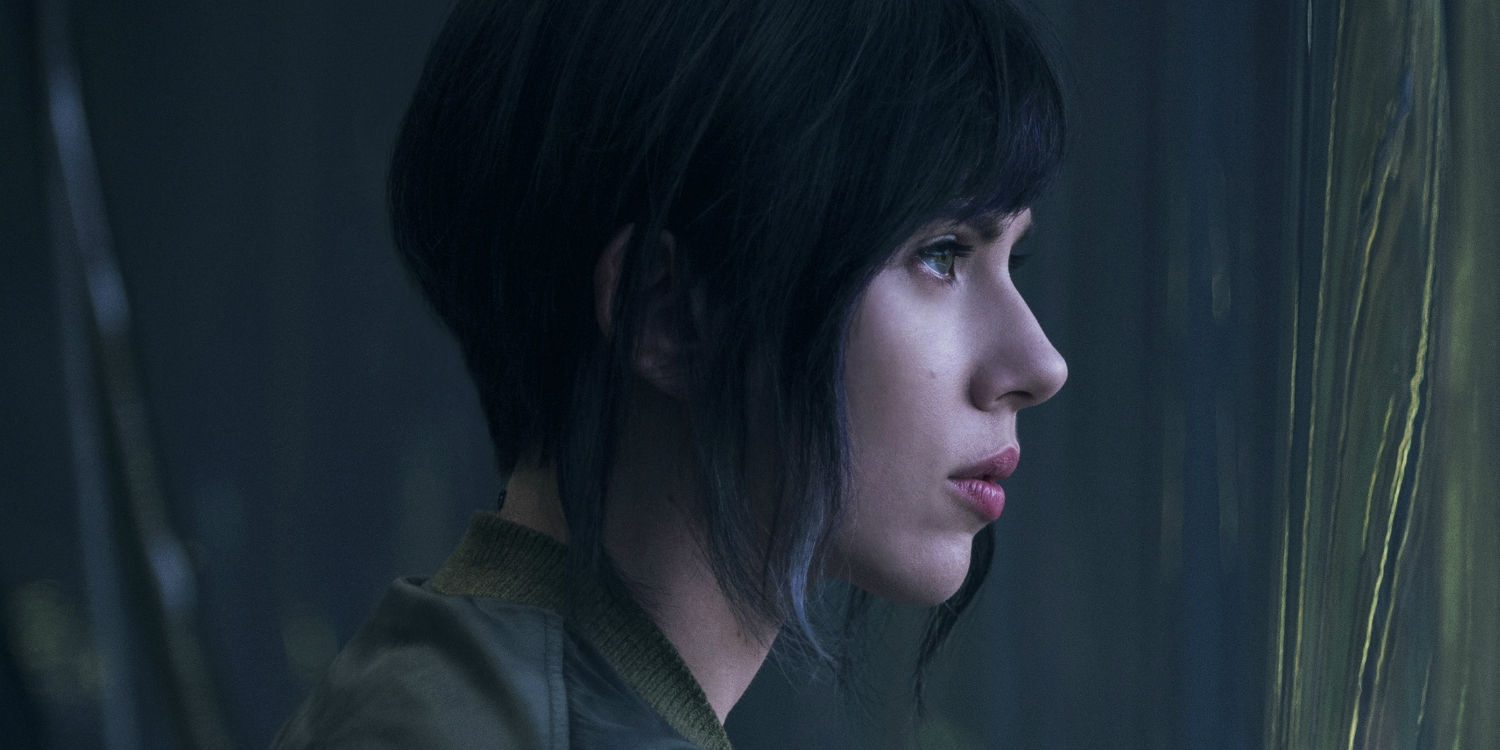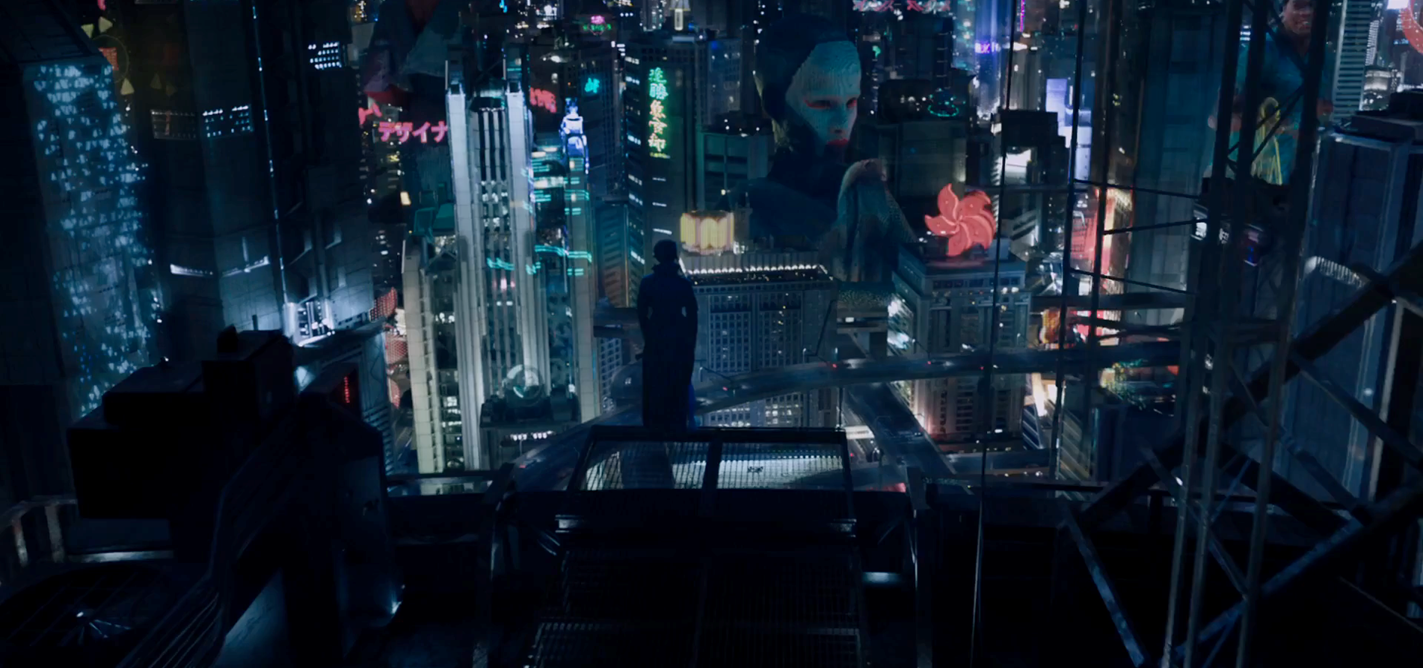
By Nathan Simms
In the 1995 anime, the cybernetic future of humanity is a juxtaposition of decaying slums and bright neon inner city. Taking inspiration from Blade Runner (Scott, 1982) and William Gibson’s 1984 book Neuromancer, the city of 2017’s Ghost in the Shell is vibrant and almost otherworldly. The world of Ghost is captivating with its towering skyscrapers and twirling, holographic advertisements towering about the cityscape. Here, the remake matches its source material almost perfectly. In fact, the live-action purposefully and exactly emulates the most memorable shots from the original but in a manner that is supposed to appear “real.”
While the American, live-action remake of Ghost is a marvel to behold with its twirling cityscape, it fails in delivering the same sense of philosophical brooding that is found in the original. And while Scarlett Johansson delivered a spectacular performance, albeit controversial amongst accusations of whitewashing, Sanders’ film leaves us wondering why live-action remakes of animated masterpieces are necessary, beyond a studio’s desire for revenue.



 RSS Feed
RSS Feed
